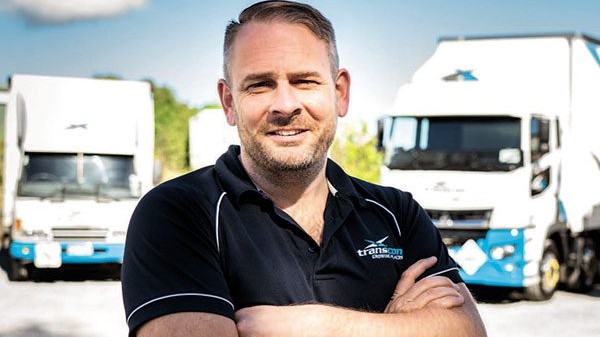What are we willing to accept?

The transport industry has become accustomed to razor-thin margins and earning a pittance. But are we our own worst enemies?
Having embarked on a newish journey with the launch of Delivery, a road transport- focused advisory provider, I’ve been spending a fair amount of time talking to all manner of operators, suppliers and customers, and a raft of adjacent advisors, such as accountants, which was provided plenty to mull over.
One thing that repeatedly comes up across the country is the ideology that we operate within an industry comprised of razor-thin margins, as though there are some pre-determined categories of where an industry is resigned to sit. Although I wasn’t present at the time, I’m relatively confident that when our creator consulted with the founding cohort of livestock- powered transport providers, he wasn’t so bold as to banish them to earning a pittance forever more. Somehow, we’ve come to accept it, and as much as we might resent the label, we seem hellbent on maintaining that very status quo.
In much the same way as things would’ve worked back in old JC’s days – and his dialogue with the livestock steerers – we are in fact all part of a market, one that features a supply and demand component. The law of economics suggests that demand will always favour – and, in theory, grow – where the lowest supply price is found. Given we’re all on the transport-supply side, surely the reality is that we are the creators of the supply price; not you, not me, but we, and collectively what we choose to accept is what the market will define as the price? Throw in that default bias we’re all harbouring towards having to work in an industry with ‘slim margins’, and pretty suddenly, we look like our own worst enemies.
However, what proves even more baffling during this period of resource (labour and equipment) deprivation is that the same trend is continuing. Surely if ever there was a time when the ‘supply price’ should be climbing dramatically, it is during a period of supply shortage? Our ‘market’ obviously didn’t get that economics memo!
Just imagine what things could and would look like for us all if we tipped things on their heads and decided we should be a high-margin sector and strived to operate at the highest of echelons on this front. I’m not talking about cartels, price gouging, or monopolising; I simply mean getting honest about our actual costs, very real risks, and capital intensity required to provide our services, and operating in a manner befitting of such an industry.
This leads me to another related topic that only seems to rear its head when murmurs of a recession of economic headwinds start doing the rounds; that of taking a solid review of one’s costs and operating efficiency and getting serious about where things are at. At the very least, we must ensure we’re passing on cost increases as soon as they hit us, let alone well after the fact, and more critically, doing so with a frequency and regularity to keep us in a positive position. We’re fortunate that many of our costs are not what you’d deem ‘industry-specific’ and are pretty transparent for all the world to see – think fuel, RUCs, general labour cost trends, etc. And better yet, we can easily access some indices that allow us to gauge the total movement of those costs within our market, whether that’s looking at easily accessed quarterly inflation data or the likes of the more specific Grant Thornton Cost Index that’s aggregated solely around transport sector-relevant data.
These are but two simple sources, but talking to your banker or accountant will provide a few others that might be worth using to create your own benchmark; think of viewing these reports as your quarterly prompt to check in on your cost-recovery alignment.
While costs are one aspect we rightly focus on, so too is efficiency and critiquing whether there’s a smarter way of doing what we do, or in fact, what we don’t do. When was the last time you aggressively reviewed your revenue at a customer level and spoke with your team about the specific quirks relating to a given customer? Chances are there might be some revenue you’re either losing on or, conversely, can significantly increase what you’re charging for a given task based on the value you’re delivering.
But again, I ask the question of what we are willing to accept. And will we decide that today’s the day we will stand our ground on the fair return we should all strive for? I know where I stand.
Finally, long-time readers will sigh in relief to hear that Wilsons Bridge at the Pohuehue Stream, which I’ve referenced on several occasions, has finally had its day and its safety capabilities restored to full strength, a mere eight months after becoming defective.
Read more
Adapting to the conditions
0 Comments5 Minutes
The greatest risk?
0 Comments6 Minutes



